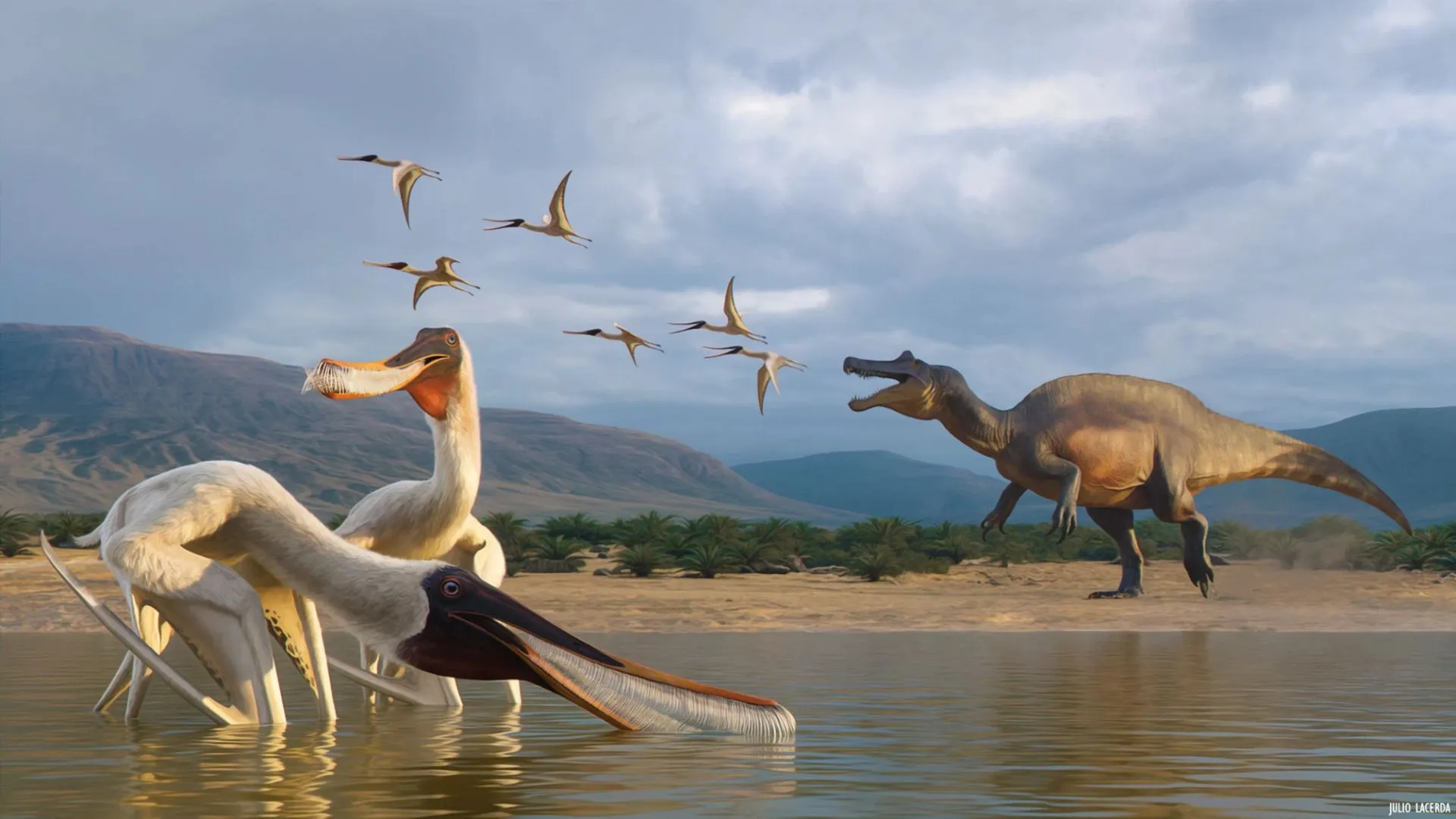Copyright Interesting Engineering

Paleontologists have identified a new species of flying reptile, named Bakiribu waridza. The most compelling detail of the discovery is the origin of the fossil: it was found in a regurgitalite, or fossilized puke, left by an unknown predator. Surprisingly, the trace fossil preserved the remains of an entirely new pterosaur species that was consumed and then regurgitated indigestibly. It is described as the first filter-feeding pterosaur from the tropics, found in the Araripe Basin of Northeast Brazil. Bakiribu waridza name means “comb mouth” in the language of the Indigenous Kariri people of the area. The presence of the pterosaur remains within this regurgitalite provides rare direct evidence of a predator-prey interaction in the Cretaceous ecosystem. A specialized filter-feeder Pterosaurs were an extinct group of flying reptiles that soared through the skies for the majority of the Mesozoic Era (about 228 to 66 million years ago). They were a diverse clade, distinct from dinosaurs, that varied widely in size and lifestyle. Bakiribu waridza belongs to the Ctenochasmatidae family, a group known for its specialized feeding adaptations. What sets Bakiribu apart are its elongated jaws and dense, brush-like rows of teeth. This design was perfectly suited for sifting small organisms from water, much like a modern baleen whale or a flamingo feeds. Although Bakiribu resembles the famous filter-feeding Pterodaustro, its teeth are structured and spaced differently, indicating that it followed its own evolutionary path. Detailed analysis of the teeth confirmed that the dentine and pulp cavities were still intact. Direct evidence of Cretaceous predator-prey Based on the evidence, spinosaurids are identified as the most plausible producers of the fossilized puke that contained the remains of the pterosaur. “Considering body size, feeding ecology, and existing evidence of pterosaur consumption, spinosaurids emerge as the most plausible producers of the regurgitalite described here,” the researchers led by Federal University of Rio Grande do Norte, wrote in the study paper. Dominating the Early to Late Cretaceous period, Spinosauridae was a unique family of large, bipedal theropod dinosaurs. They are known for their specialized, semi-aquatic lifestyle. Apart from this pterosaur, the regurgitate contained the indigestible remains of fish. This confirms the predator had a broad diet, actively consuming both pterosaurs and aquatic prey. Furthermore, the clustered arrangement of the fish and pterosaur remains strongly supports the classification as fossilized vomit. This is because if the remains were simply deposited over time, they would likely be more scattered. The tight position suggests the prey items were consumed and expelled as a cohesive mass. This single trace fossil offers a unique, direct snapshot of Early Cretaceous predator-prey interactions. “The exceptional preservation of the specimen within a regurgitalite, alongside head-aligned fish remains, provides rare direct evidence of trophic interactions in the Early Cretaceous Araripe paleoecosystem,” the authors wrote. It also offers a wealth of information regarding the ecology and trophic dynamics (food web) of the ancient Gondwanan ecosystem. The study was published in the journal Scientific Reports on November 10.



